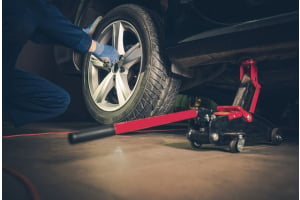What to Know When Driving on a Spare Tire

The disheartening sound of a flat tire is an experience many motorists encounter. Regardless of the meticulous care we give our tires, they sometimes meet with unfortunate events. Here comes the unsung hero of the automotive world: the spare tire. However, it's important to note that driving on a spare doesn't equate to regular tire conditions. This guide offers insights on the nuances of driving with a spare and the types available.
Types of Spare Tires
To use a spare effectively, first, understand the different variants:
- Full-Size Matching Spare: Exactly mirroring the rest of your tires, it has a similar size and tread. It can serve as a long-term substitute.
Examples: - Full-Size Non-Matching Spare: Although of the same dimensions as your other tires, it might not match in brand or tread pattern.
Examples: - Compact Temporary (Donut) Spare: Predominantly found in modern vehicles, this is smaller and narrower than standard tires.
Examples: - Folding or Collapsible Spare: Designed to be space-efficient, this needs to be inflated before installation.
Examples: - Run-Flat Tires: These allow short distances of driving even after losing air pressure.
Examples:
Locating the Spare Tire
Spares are strategically positioned based on the vehicle's design:
- Trunk: The go-to location. It is usually tucked beneath the trunk floor.
- Underneath the Vehicle: Often seen in trucks and SUVs, the spare is hoisted below the vehicle's rear. A unique mechanism fetches it.
- Rear Door: Certain off-roaders have it conveniently attached to the rear door.
- Inside the Cabin: Some larger models have the spare within the cabin, usually camouflaged beneath the floor or seats.
Driving Dynamics on a Spare
Your spare type dictates the speed and distance you can cover:
- Full-Size Spares: Matching full-size spares mean business as usual. However, fixing or replacing the impaired tire soon is a wise move.
- Compact Temporary Spare (Donut): With these, 50 mph is your top speed, and they're designed to last just about 50-70 miles.
- Folding or Collapsible Spare: Drive cautiously, maintaining a speed below 50 mph and seek a permanent solution swiftly.
- Run-Flat Tires: When deflated, they grant you roughly 50 miles at a maximum pace of 50 mph.
Closing Thoughts
A spare tire, though a boon in emergencies, is typically a short-lived remedy (unless it's a full-size matching spare). Regular tire inspections can curtail the odds of resorting to a spare. By staying informed, you guarantee a safer and smoother journey. Safe driving!





